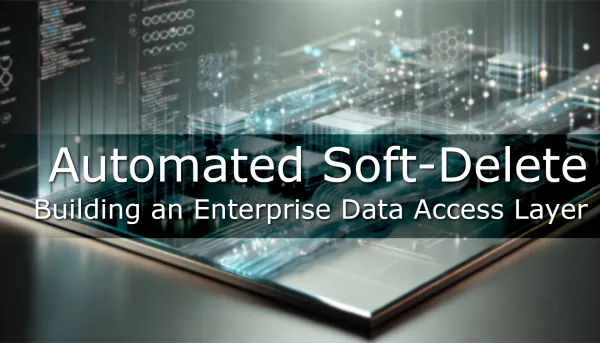Series “Enterprise DAL”
 Building an Enterprise Data Access Layer: Automated User Auditing and Series Wrap-up
Building an Enterprise Data Access Layer: Automated User Auditing and Series Wrap-up
Welcome to the seventh and final article in our series on building an enterprise-grade Data Access Layer (DAL) in C#. Over the last six posts, we have methodically built a robust, automated, and secure DAL using a database-first philosophy with C# and Linq2Db.
 Building an Enterprise Data Access Layer: Composable Row-Level Security
Building an Enterprise Data Access Layer: Composable Row-Level Security
Welcome to the sixth post in our series on building a feature-rich, automated enterprise Data Access Layer (DAL) using C# and Linq2Db. In our previous articles, we established a powerful architectural pattern: a composable global query filter system. This system allows us to define cross-cutting concerns as simple interfaces, automatically combining and applying them to every relevant query.
 Building an Enterprise Data Access Layer: Composable Multi-Tenancy Filtering
Building an Enterprise Data Access Layer: Composable Multi-Tenancy Filtering
In our previous articles, we established a robust foundation for our enterprise Data Access Layer (DAL). We began with a database-first approach using C# and Linq2Db, then implemented automated auditing for CreatedAt and ModifiedAt timestamps. Most recently, we engineered a powerful, composable global query filter system to handle soft-deletes transparently. This architecture was designed for extensibility, and in this post, we will leverage that investment to tackle one of the most critical ...
 Building an Enterprise Data Access Layer: Automated Soft-Delete
Building an Enterprise Data Access Layer: Automated Soft-Delete
Welcome to the fourth installment of our series on building a robust, enterprise-grade Data Access Layer (DAL) in C#. In our previous post, we established a powerful automated auditing system to track entity creation and modification times (CreatedAt/ModifiedAt). Now, we will tackle another critical enterprise requirement: soft-delete.
 Building an Enterprise Data Access Layer: Automated Auditing
Building an Enterprise Data Access Layer: Automated Auditing
In our previous posts, we laid the foundation for our enterprise Data Access Layer (DAL). We established our core principles: a database-first philosophy, the use of C# and Linq2Db, and a commitment to automating cross-cutting concerns to enhance security and data integrity. We also structured our project, set up a scaffolding interceptor to enrich our auto-generated entities, and chose ULIDs as our primary keys for their performance benefits.
 Building an Enterprise Data Access Layer: Database and Code Structure
Building an Enterprise Data Access Layer: Database and Code Structure
Welcome back to our series on building a robust, enterprise-grade Data Access Layer (DAL) with C# and Linq2Db. In our previous post, we established the core principles and non-negotiable capabilities our DAL must possess, including automatic multi-tenancy filtering, soft-delete, and auditing. Now, we'll begin laying the foundation for this powerful system by defining the database schema and the initial code structure.
 Building an Enterprise Data Access Layer: The Foundation
Building an Enterprise Data Access Layer: The Foundation
In enterprise software development, the Data Access Layer (DAL) serves as the critical interface between an application's business logic and its underlying data store. Beyond basic CRUD operations, a robust DAL is fundamental for ensuring data integrity, security, and operational consistency. It proactively addresses cross-cutting concerns, preventing inconsistencies, defects, and potential security vulnerabilities that arise when these responsibilities are left to the business logic.
See all series.